
|
|
Aurora, Golden Goddess of the Dawn Nick Kollerstrom At dawn or dusk, when the sun briefly shines with the hues of liquid gold, we ponder the words aurum (the Latin word for gold) and aurora. Also the French words l'or for gold, and l'aube for the dawn, are cognate with these, as is the English word 'aura'. 'Au' is the chemical symbol of gold: Rudolf Steiner gave what he called the 'Sun-sound' as Aa-oo, which we express with these two letters, A-U. Let us here explore the alchemic meaning of this connection, via the mythic image of Aurora. The present study could be efficacious as an anti-depression treatment. The fiery, solar nature of gold is shown in the way gold is put to the 'proof', melted in a fierce furnace. Then other metals gradually burn up but the gold doesn't, it remains. Even silver is gradually burnt away, as the 'carats' of the gold creep up through the fierce heat. The word 'proof' originally had this meaning, of being put to the test. There was one other metal that would endure the fierce heat and that was platinum, which eventually came to be recognised as the '8th metal' coming in from the New World. Gold is a metal on a journey, of being put through the fire: the fiercer the furnace, the higher its 'carats' as other metals even silver are slowly burnt away. Gold has twenty-four 'carats' that designate its level of purity. A gold ring may be eighteen carats, while finely-beaten out and almost-transparent gold foil will be 23- or 24-carat. As the sun revolves around the twenty-four hours of the day, and the twelve months of the year, so is gold is weighed in a special 'Troy' system, based on 24 or 480 grains. For centuries man has collected the traces of finely-dispersed gold and concentrated it into ingots, to encourage greed and avarice. That was so wrong! The being of gold is experienced best when finely diluted, e.g. in coloured glass, or beaten out thinly into gold foil so it can glitter in the sunshine. For how to make colloidal gold - a colloidal solution of high dilution - not a lot has been written on the subject since Michael Faraday's essay of 1857, which showed how to make its different hues.[1] Gold needs to be beaten-out and exposed to glitter in the sunlight on sacred temples and palaces of magnificence that are communal, and decorating the beauty of womankind. "There are however no veins of gold as there are of other metals"[2] Gold is finely irradiated as it were through the Earth's crust, denser in some places than in others. Mother nature doesn't concentrate it and in a sense neither should we. Beaten out to be more delicate than butterfly's wings, it can be used in all sorts of decorative ways. Nanotechnology-type uses of gold appear, in medicine, in semiconductors, fuel cells, etc. Total Eclipse of the HeartDepression has overtaken back pain as the number one cause of days off work in today's Britain. I'd like to suggest that the Aurum-Aurora meditations, and possibly gold also taken as a medicine, are here relevant. A homeopathist knows, that if someone has suffered from a 'total eclipse of the heart' maybe from some relationship going wrong, then a high dilution of gold can be quite an effective medicine: "When a patient reports that he has been depressed all of his life, think of Aurum."[3] "Gold has great remedial virtues, the place of which no other drug can supply" wrote Samuel Hahnemann, the founder of homeopathy. "And having myself use it in practice for several years, I have come to regard it in the same light: I cannot do without it. To my mind there are varieties of disease that gold, and gold only, will cure, and others that gold, and gold only, will alleviate to the full extent possible, and not a few of these varieties of disease are of the gravest nature. As a heart-remedy alone it claims the earnest attention of every medical man".[4] Here are a couple more homeopathic accounts, of symptoms treatable with gold, the so-called 'Aurum-deficient' person: By far one of the most powerful anti-depressive remedies is Aurum metallicum or the metal gold. Indeed, it does not have any healing powers in its crude form, but prepared according to homeopathic methods it becomes a gem. It covers the classic situation in which one person dies after many years of a happy marriage, and the other partner dies within a few months. The surviving partner will say, 'I lost the sunshine in my life,' meaning they lost all purpose in life. Aurum will also help senior citizens in nursing homes where loneliness and a lack of purpose often bring an 'Aurum state' of emptiness and despair. Aurum also covers physical and emotional pain as well as the desire to commit suicide.[5] Responsibility can wear a man thin. After all, he lives in the constant fear that someone may come and rob the treasure which he has the duty to guard Anxiety; Cares, full of worries; Fear from noise at door. In a sense he acts like the Minister of Finances who answers to the President and is responsible for keeping the wealth of all people ... No, it is out of duty and a higher sense of responsibility that he guards the treasure ... One day he comes to work and finds that all the gold has been stolen. This is the point where 'the Aurum pathology' begins. In keeping with this idea, he develops Anxiety of conscience as if guilty of a crime. He feels as if he has let down both the people and the President Religious despair of salvation. This emotion is so deep that he sees no way out - he has utterly failed Sadness with suicidal disposition. His single symptom Cheerful while thinking about death is a beautiful summary of the broken down state: Death is the way out, the only way to purge the soul of the sin.[6] This person needs Aurora's touch. The goddess Aurora (Eos or Auos in the Greek)This dawn-goddess expressed the cosmic will-to-get-up-in-the-morning. Imagine her as emerging from the early-morning dawn. You look into her eyes, and see her innocence. She reaches out, her finger touches your heart, and you sense the golden radiance. We speak of the coronal arteries around the heart, and the corona around the Sun, as having the same derivation. In mythology she was a colourful goddess, whose stories shimmered with crimson, yellow, rose and gold. But, her appearance in the daily round was rather ephemeral, and was it this which prevented temples being constructed in her honour? She is missed out from coffee-table books on goddesses, just as long ago she complained - or so the roman poet Ovid tells us - to Zeus: "Least I may be of all the goddesses the golden heavens hold (in all the world my shrines are rarest)."[7] Let's list twelve attributes of this classical Dawn-goddess:
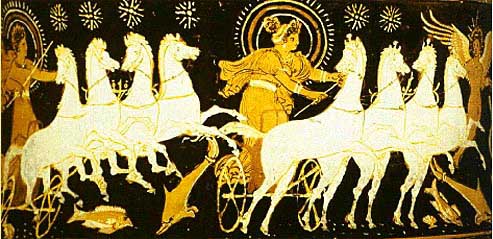
In the story, her mortal lovers tended to get left behind when she had to get up out of bed and open the shutters of dawn, etc. Sometimes, if they were lucky, they could get into her chariot, to be taken for a ride, as her steeds Lampos and Phaithon champed impatiently, in Dawn's golden glow, waiting to fly up into the sky. Also, she was connected with the twelve hours of the day: "Twelve maidens [the Horai] shining-tressed attended her, the warders of the high paths of the sun for ever circling, warders of the night and dawn."[10] In an Aurora workshop one would slowly intone the sound 'Aurora', as well as that of her island where she danced and where the Sun rose, Aiaia. It would also appreciate the strong solar themes in the songs, 'Total Eclipse of the Heart' and 'Holding out for a Hero' by Bonny Tyler (1983, 84). The latter concerns that liminal realm at the time of of waking up, before the dreams of the night-time have fled. Such a workshop would have to be up to greet the dawn ... There is a mystery-drama about Aurora/Eos having her son slain, in the Trojan war, then she becomes too depressed to get up in the morning etc., and it might be worth trying to develop this for working with people suffering from depression. MeditationTchaikovsky's ballet Sleeping Beauty was about the Princess Aurora. It rather lost the heart and soul of the fairy-tale, which involved (to remind you) a baptism-party, where the king had just twelve golden plates, so the 13th (lunar-unlucky) 'wise woman' in the kingdom couldn't be invited, plus also that the Princess is ordained to bleed when she reaches her 15th year[11] - he made it instead her 18th year. Thus the struggle between solar and lunar motifs, the very meaning of the story, goes out of the window and instead the theme becomes merely, will the prince arrive and kiss Aurora? I guess that's showbiz - but, he did use the name Aurora, for his doomed solar heroine, for which we should be grateful. If the classic Aurora story is a bit faint, so to speak, it's because horses are not and cannot be 'solar' creatures - lions are! Horses are linked to intelligence and service ("The tygers of wrath are wiser than the horses of instruction" - William Blake) but they cannot have that solar quality: have a look at the white lions that Linda Tucker has re-introduced into South Africa,[12] they have that solar principle of affirmation of life - that actually, you do want to get up in the morning - that a horse cannot express. Africa has deep solar themes of gold, lions and the rhythm of the heart in its music. We need to re-weave some solar myths with more of an Afro- slant to them. In the macrokosmos, the greater world, the heart-beat of the Sun pulses majestically every twenty-two years. We are just now (2011) on a rather delayed upward climb of a new solar cycle. A lot of people don't realize that its whole magnetic field totally reverses North-to-South every eleven years, a very biological cardiac process, systole-diastole. It always strikes me as a shame that astronomers are not able to comprehend the meaning of the wonderful stuff they discover. They've managed to get SOHO sun-satellites right outside the plane of the solar system to detect this stupendous process. Jesus said, "As a man thinketh with his heart, so is he" and maybe if astronomers could try to think with their hearts a bit more we might get somewhere. 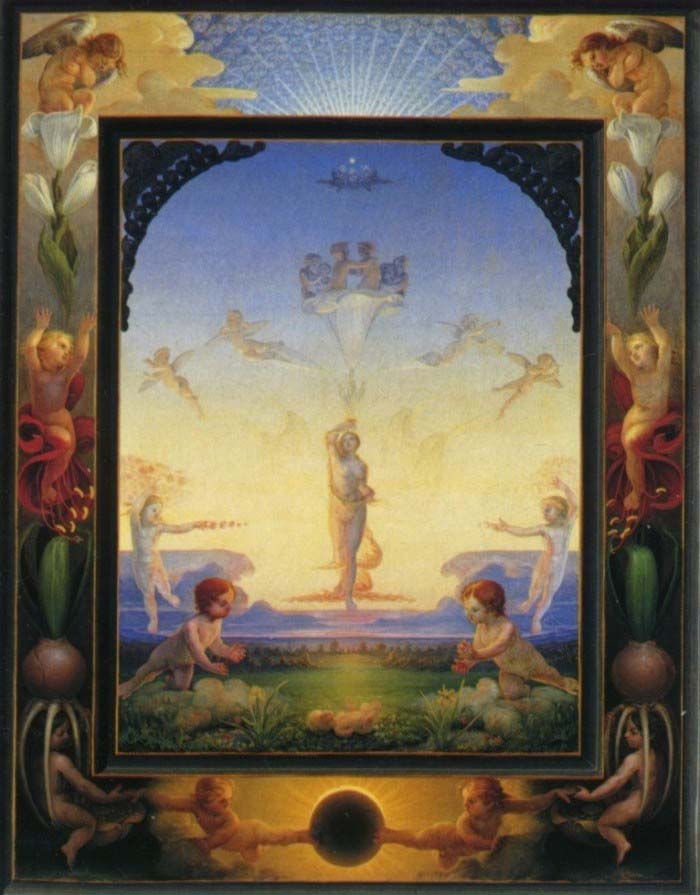
Magic of GoldGold has a magic that is connected with the human heart, and also with that which is everlasting. The Roman natural philosopher Pliny had this to say about gold's healing power: "Gold is efficacious as a remedy in many ways, being applied to wounded persons and to infants, to render any malpractices or sorcery comparatively innocuous that may be directed against them."[13] If we may turn to the 'Satanic bible' of Anton Lavay (California, 1969), it gave this advice to aspirants: "Ideally the chalice should be made of silver, but if a silver chalice cannot be obtained, one made from another metal, glass, or crockery may be used - anything but gold. Gold has always been associated with white-light religions."[14] Satanists mustn't use gold - it's too heavenly! The Bible begins with a garden and ends with a city. Its final, transcendent vision is of a city, glowing golden from within. No Sun shines above it,[15] but instead the streets have a golden radiance. To quote the late British philosopher John Michell, "this wonderful vision of a glittering, translucent city is the climax of St John's Revelation."[16] The numbers involved in the carefully-given dimensions of St John's heavenly city are solar: 12 and 144. If we try to imagine a temple to Aurora, one or two of its East-facing windows would have a monomolecular layer of gold, which appears green as light shines through it. Golden Glass"And the city was pure gold, like unto clear glass" Book of Revelation, XXI, 18. Glassmakers have to cope with very high temperature ovens to work with gold, around six hundred degrees centigrade, and they can produce a lovely pink at about ten parts per million, and ruby red at a slightly higher concentration. A gold compound is added into the molten glass, and it's then cooled, then slowly re-heated until it starts to glow pink as the colloid mysteriously forms. It's a tricky and skilful process. The secret of making red glass was found in Bohemia in the 17th century.[17] This was a blow to the pride and prominence of Venetian glass-makers, who had tried unsuccessfully for years to make it. Johann Kunckel is usually credited with re-discovering how to make gold ruby glass, in Brandenburg, Bohemia around 1670 ... An other sometimes named as the inventor of gold ruby glass is Andreas Cassius, whose purple-red pigment called 'Purple of Cassius' was very hard to make and was sometimes used to colour glass red. Other chemicals produce red glass, but none have the special magic of gold ruby:[18][19] "The beauty alone of gold-ruby glass justified neither the tremendous efforts made in its development nor the high prices which these glasses brought. It was no doubt the mystic power attributed to gold and the ruby colour produced by it which was responsible for the extraordinary demand."[20] Where did the red come from? Traces of tin or lead seemed to be necessary, "their presence more or less controls the development of the colour," or else a mere pale pink hue would result. The ruby hue is spoilt if the glass is allowed to cool slowly, it must be fairly rapidly cooled, before re-heating when the nuclei of gold ground with the glass to make the hue. The 'thermal history' of the glass is important. "Appropriate treatment of a gold-containing glass could lead to practically all colours of the rainbow."[21] My Purple GoldChemistry nowadays has vanished from our civilisation as an experiential science, let's try to bring it back again, to regain the wonder and mystery that rightly belongs to this subject. To see the lovely hues of gold, prepare a dilute solution of gold chloride, say 0.01%, or maybe some higher dilution, and a solution of Rochelle salt (a weak reducing agent), say 1%. Add the one to the other, and if you are lucky the solution will slowly grow into a lovely purple. Another time I found the solution went black - maybe it was too concentrated, or not clean enough. Then by the next day this had turned into a lovely ruby red, just like the filterpaper-picture shown above (by Kolisko, using 1% gold solution in the sunshine, 1936). You can put these solutions on your window-sill to admire them, they will last a week or so.[22] What to be called 'purple of Cassius' is made using a tin solution. Add stannous chloride solution to gold to make it. I didn't succeed, and instead obtained a rich hue of golden-amber. Again, why not put this into a phial on your window-sill. As the Sun-metal, it needs the sunshine. 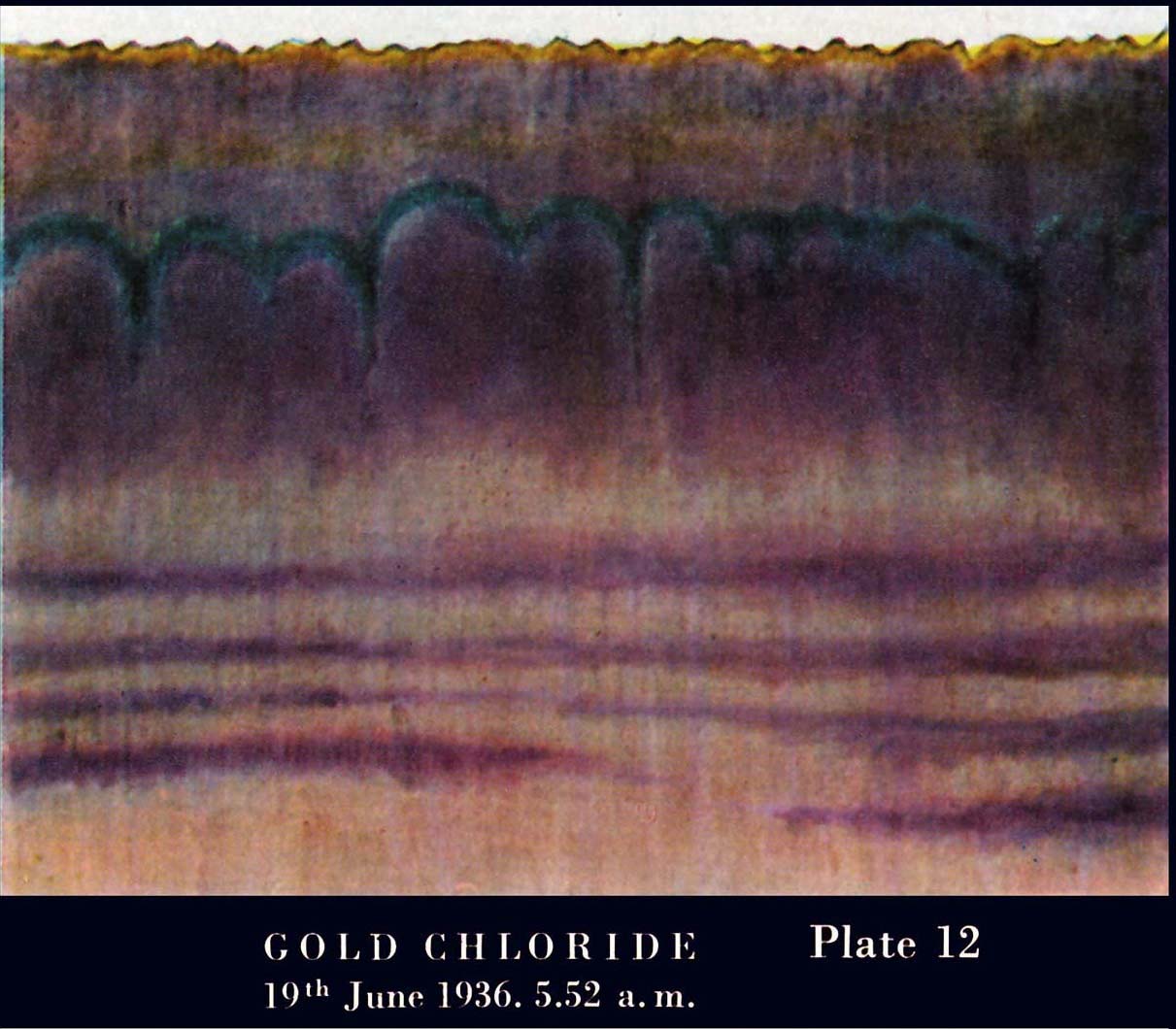
The above figures show solutions of gold which Mrs Kolisko obtained by rising gold solutions in sunlight (they are paintings as no-one then had colour photography). The sunlight itself reduces the gold. Using a solution of gold chloride, try this by rising it up a solution in sunlight, up a filterpaper. Let it dry, then add another lot later, so it rises somewhat higher. She published her gold-experiment over the 1961 total eclipse of the Sun. I always found it quite difficult to repeat her gold experiments, it's quite temperamental.[23] References[1] M. Faraday Experimental Relations of gold and other metals to Light 1857 Philosophical Transactions, 147, Part I, pp.145-181. [2] C. Budd Of Wheat and Gold, Thoughts on the Nature and Future of Money New Economy 1988, p.47. [3] http://www.herbs2000.com/homeopathy/aurum_met.htm [4] Burnett, J. Gold as a Remedy in Disease 1879 Finsbury Park, London [5] http://www.drluc.com/homeopath-depression.htm [6] http://www.lyghtforce.com/HomeopathyOnline/Issue1/reper.html [7] Ovid, Metamorphoses, 13.576. [8] http://www.66.90.77.92/Ouranos/Eos.html [9] Quotes from http://www.theoi.com/Ouranos/Eos.html The crew eagerly awaited her: "we beached our vessel upon the sands and disembarked upon the sea-shore; there we fell fast asleep, awaiting ethereal Eos" - but somehow, she wasn't quite there. [10] Quintus Smyrnaeus, Fall of Troy http://mirrorpalace.wordpress.com/quotes/eos/ [11] Jacob and Wilhelm Grimm complete Fairy Tales, 1972, Briar Rose, p.203. [12] http://www.whitelionshomeland.org/ Mystery of the White Lions, Children of the Sun-god, Linda Tucker, 2003. [13] Pliny, Historia Natura, Lib. XXXiii, Cap XXV. [14] Anton LeVey The Satanic Bible, 1969, p137. [15] Strictly it says, "And the city had no need of the Sun, neither of the Moon ..." Rev. XXI 23. [16] John Michell, The Dimensions of Paradise, 1988, p.22. [17] "The ideal ruby color is attained when many small gold particles are formed, being neither too small, nor too large. The evidence is in the color. A very small number and size of gold particles will color the glass firstly a pale brown and then with time, the brown gives way to a purple shade. Continued heating slowly increases the size and number until a ruby eventuates. If the Gold Amethyst is arrested at the purple stage the color may be too deep a purple. Longer firing will lighten the hue." http://gafferglass.com/technical/instructions_main.htm [18] http://www.glass.co.nz/gibruby.htm [19] But on the other hand, The Art of Glass by Antonio Neri 1662 is credited with having the first description of making gold-ruby glass written in plain language: Muriel West, Ambix 1961, IX p.113. [20] W.Weyl, Coloured Glasses 1951 Sheffield, p.380. [21] Ibid p.382. [22] One can use formaldehyde as the reducing agent, but it doesn't give such a nice purple. One first makes the gold solution alkaline by adding, say, some bicarbonate of soda, and then add a drop of formaldehyde. Nothing happens for quite a while, and then slowly the solution grows purple. This is a rather muddy hue, not so attractive as that produced by the Rochelle salt. [23] But, see my attempts here: http://www.science.anth.org.uk/kolisko/gold.htm |
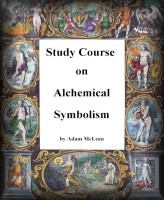 Study Courses
Study Courses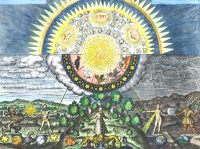 Alchemical, astrological and emblematic art prints 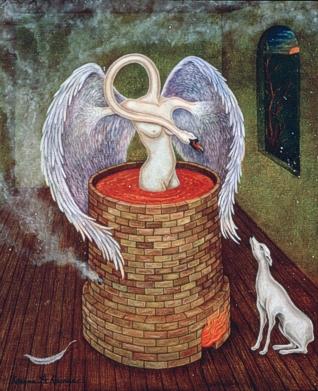 Alchemy and art 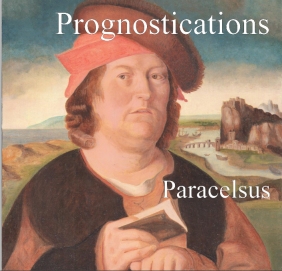 Art books Series 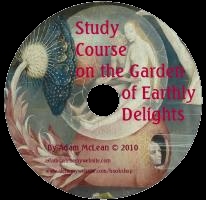 Study course on Bosch's Garden of Earthly Delights New Hieronymus Bosch Website |